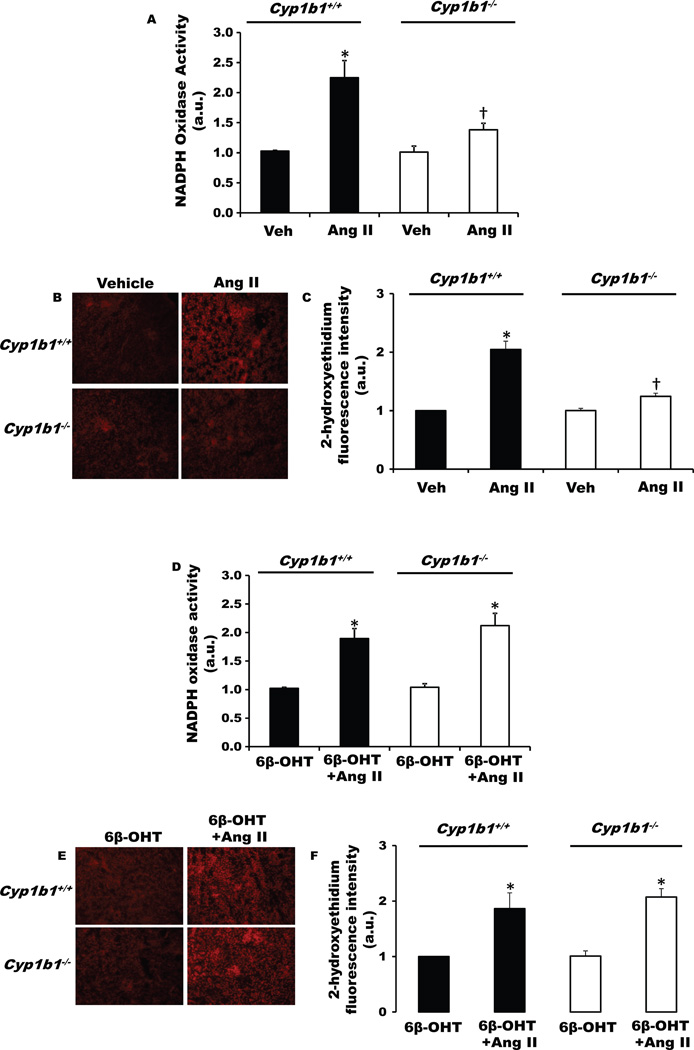Figure 2. Cyp1b1 gene disruption minimizes angiotensin II (Ang II)-induced renal nicotinamide adenine dinucleotide phosphate (NADPH) oxidase activity and superoxide production in Cyp1b1−/− mice, which are restored by concurrent treatment with 6β-hydroxytestosterone (6β-OHT).
Cyp1b1+/+ and Cyp1b1−/− mice were infused with vehicle or Ang II (upper panel) and treated with 6β-OHT or 6β-OHT+Ang II (lower panel) for 2 weeks. (A) NADPH oxidase activity was measured in kidney homogenates. (B) Renal superoxide production was determined by the fluorescence intensity of 2-hydoxyethidium. Photomicrographs are representative of kidneys from mice in each of the different treatment groups following incubation with dihydroethidium. (C) Graph depicts quantified data. *P<0.05 Ang II vs. vehicle; †P<0.05 Cyp1b1−/− Ang II vs. Cyp1b1+/+ Ang II (n=4–5 for each treatment group and data are expressed as mean±SEM).

